


This article highlights the essential treatment and prevention of blood clots, particularly for seniors who face increased risks due to age and health conditions. Understanding these concerns is vital. It explores various treatment options, such as anticoagulants, alongside lifestyle changes that can significantly reduce the risk of clots. Evidence shows that early detection and proactive health management are crucial for older adults. By addressing these aspects, we aim to reassure you that there are effective strategies available to enhance your well-being. Remember, seeking help and guidance is a positive step towards a healthier future.
Understanding the complexities of blood clots is crucial, especially for our seniors who face heightened risks due to age and health conditions. It’s important to recognize that serious complications, such as deep vein thrombosis and pulmonary embolism, can arise. By understanding the signs and symptoms, we can help ensure that lives are saved. This article explores the comprehensive treatment options available, highlighting the importance of early intervention and proactive health management.
How can our seniors navigate the challenges of blood clot risks while ensuring they receive the best care possible? We are here to support you every step of the way.
When fluid thickens and aggregates, gel-like masses can develop. These masses may form in veins or arteries, potentially leading to if they obstruct circulation. For older adults, the risk of circulatory blockages increases due to factors like:
Understanding the characteristics of thrombi is essential for early detection and intervention, as unmanaged formations can lead to significant health complications that require treatment for blood clots, including:
It's important for seniors to recognize their heightened vulnerability and the value of closely monitoring their health. Taking proactive steps can make a difference, so please consider reaching out for support and guidance.

Several elements contribute to the formation of clots, making the treatment for blood clots especially important for older adults. It’s important to recognize common causes that may affect your health:
Dr. Martinez-Clark, with his Harvard training and extensive cardiovascular experience, ensures that these sophisticated tests are seamlessly integrated into your comprehensive care plan. This approach not only enhances your at Amavita but also provides reassurance that you are supported every step of the way.
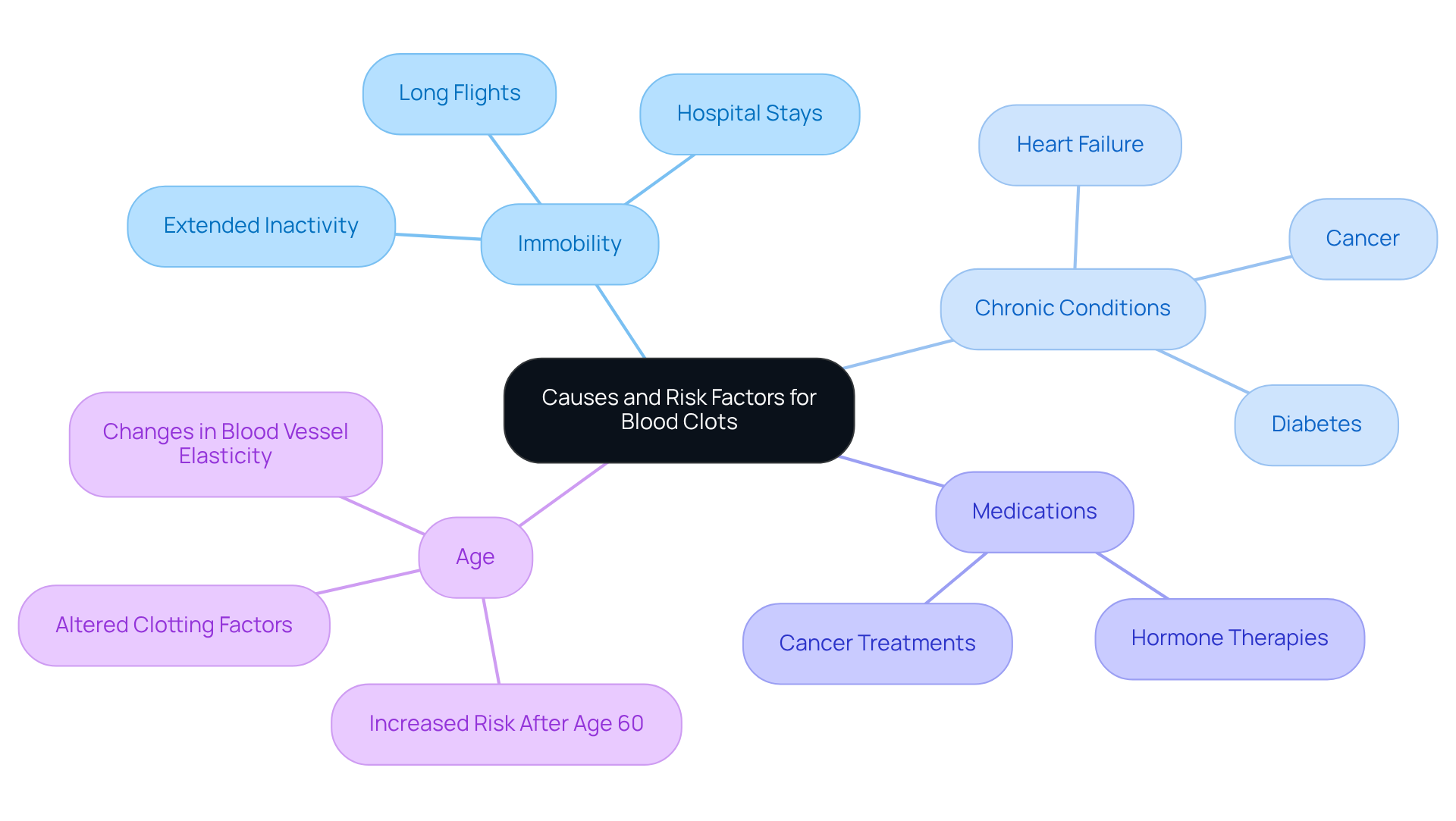
Recognizing the signs of blood blockages is vital for timely treatment for blood clots. Common indicators include:
At Amavita Heart and Vascular Health, our compassionate specialists utilize advanced diagnostic imaging to identify potential blockages and assess the severity of symptoms. If you or a loved one experiences any of these signs, please seek immediate medical attention. We understand that this can be a concerning time, and our ensures that high-risk patients receive the necessary treatment for blood clots along with targeted cardiovascular care. Our minimally invasive treatments are designed to restore health effectively, providing reassurance and support throughout the process.
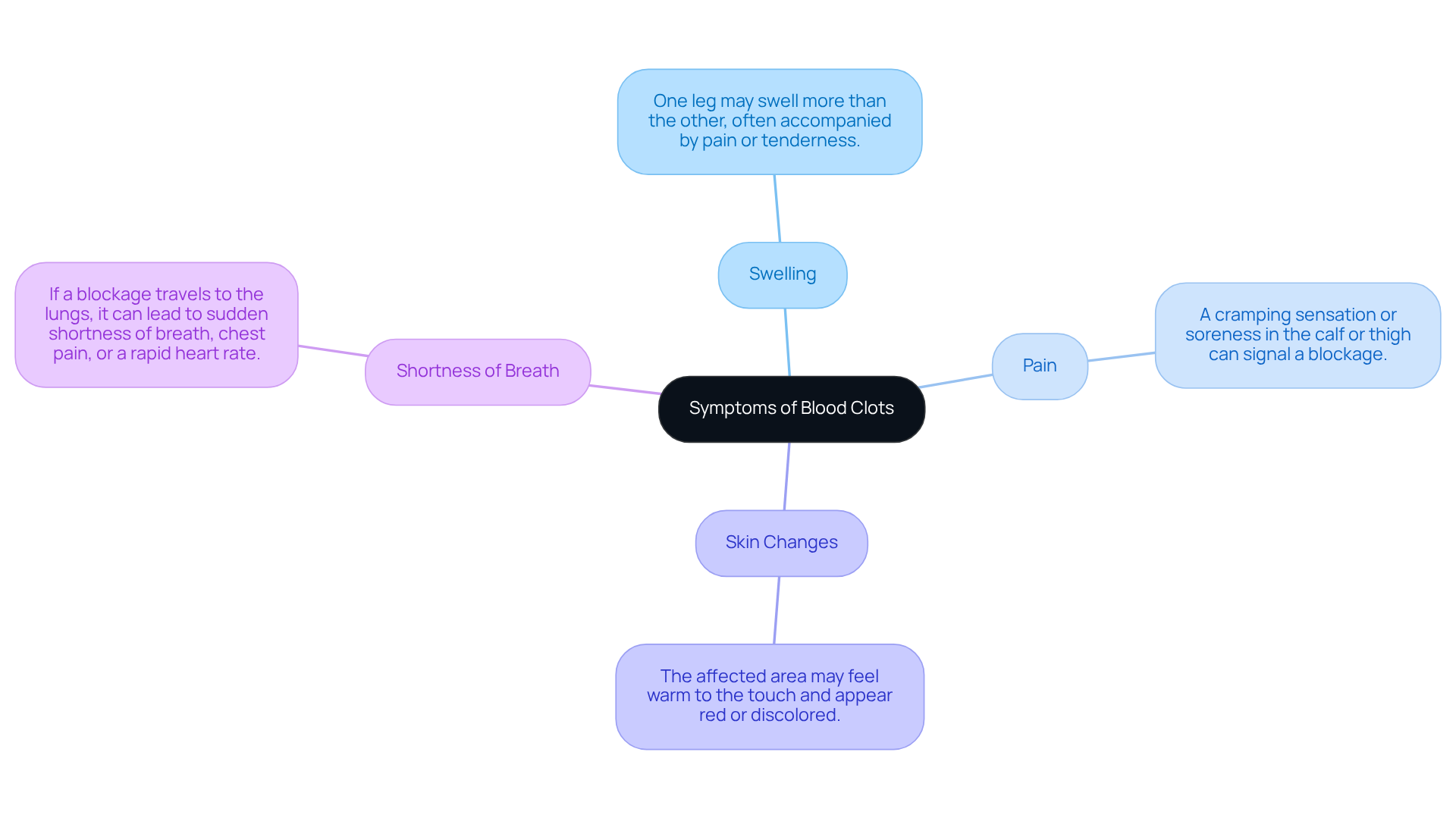
Diagnosing blood clots can feel overwhelming, but understanding the process can help ease your concerns. Several approaches are typically used:
By familiarizing yourself with these diagnostic methods, you can feel more prepared for medical evaluations. Remember, these assessments are part of a comprehensive care plan designed specifically for your cardiovascular health needs, and you are not alone in this journey. Your health and well-being are our top priorities, and we are here to .
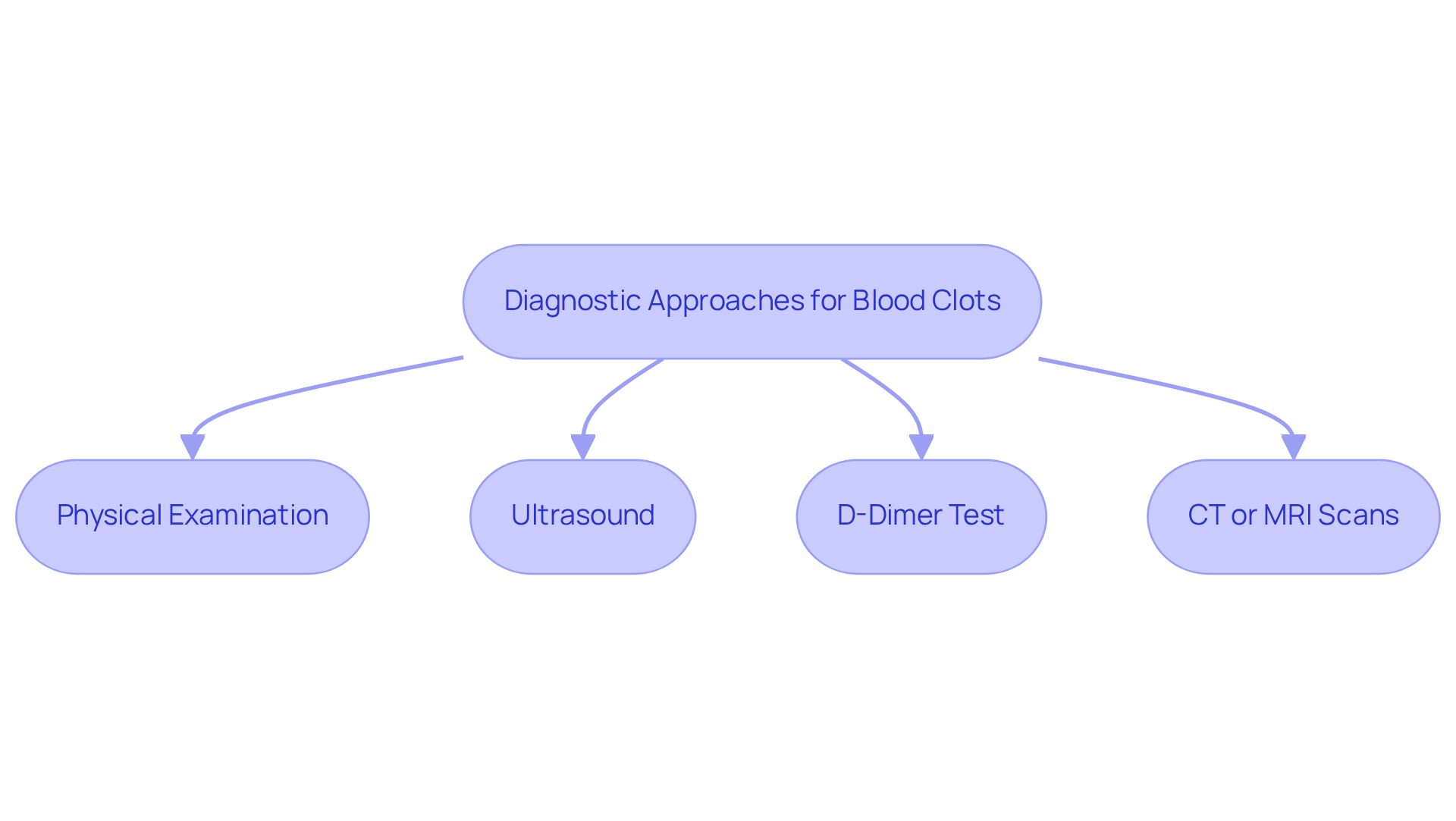
Treatment for blood obstructions can differ based on their severity and location. At Amavita Heart and Vascular Health, we genuinely care about our patients, particularly those at high risk, such as individuals with diabetes, hypertension, or a family history of heart disease. We offer tailored cardiovascular care to meet your unique needs. Here are some common treatment options:
With , you can trust that these treatment options will be integrated into a comprehensive care plan tailored specifically for you. We encourage seniors to discuss their treatment options with their healthcare provider to determine the best course of action, especially when considering the advanced imaging and evaluations available at Amavita. Remember, you are not alone in this journey; we are here to support you every step of the way.
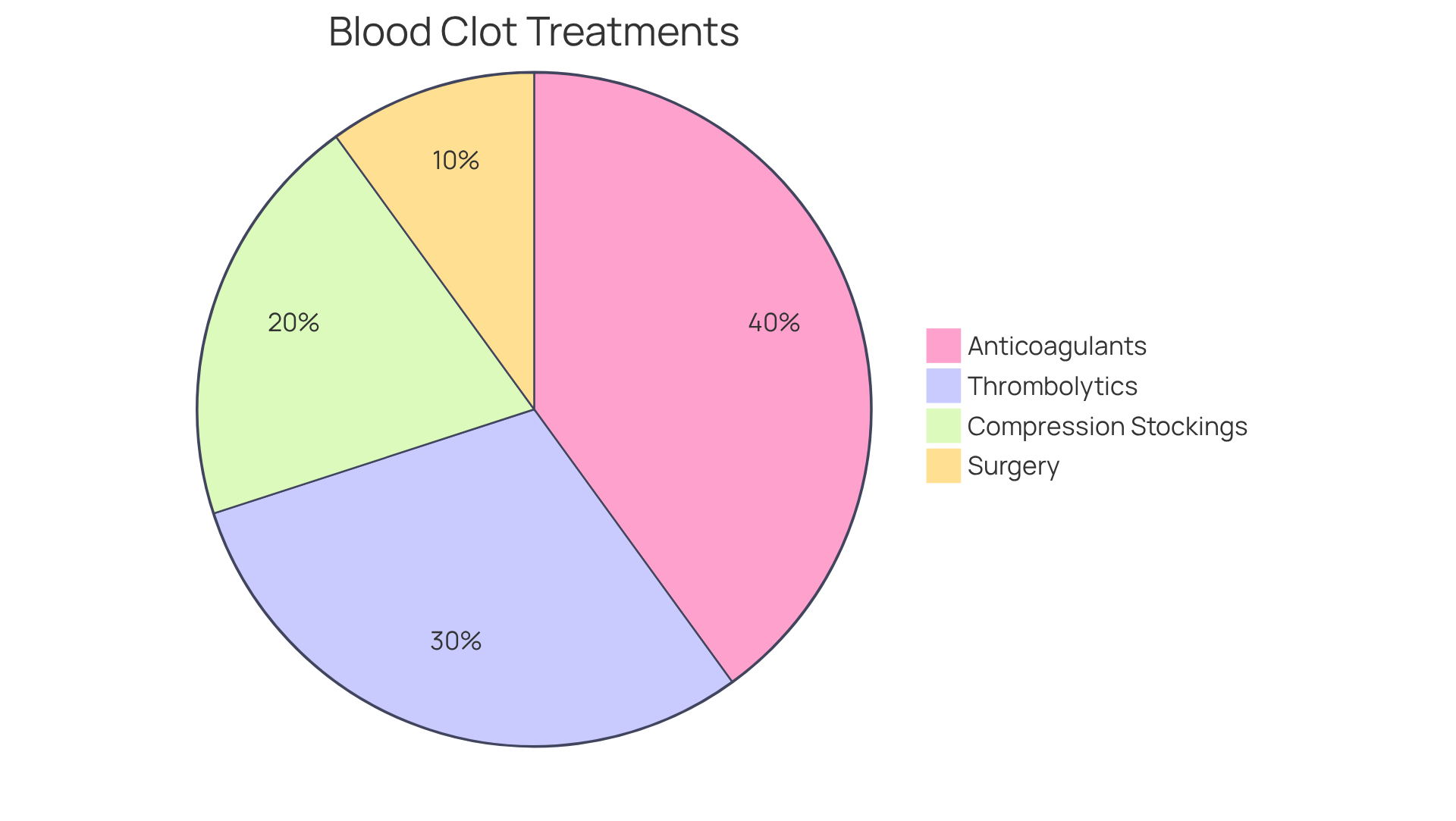
Preventing blood clots is an important concern for many, and making a few can make a significant difference.
By implementing these strategies, you can significantly lower your risk of requiring treatment for blood clots. Remember, you are not alone in this journey; support and resources are available to help you every step of the way.
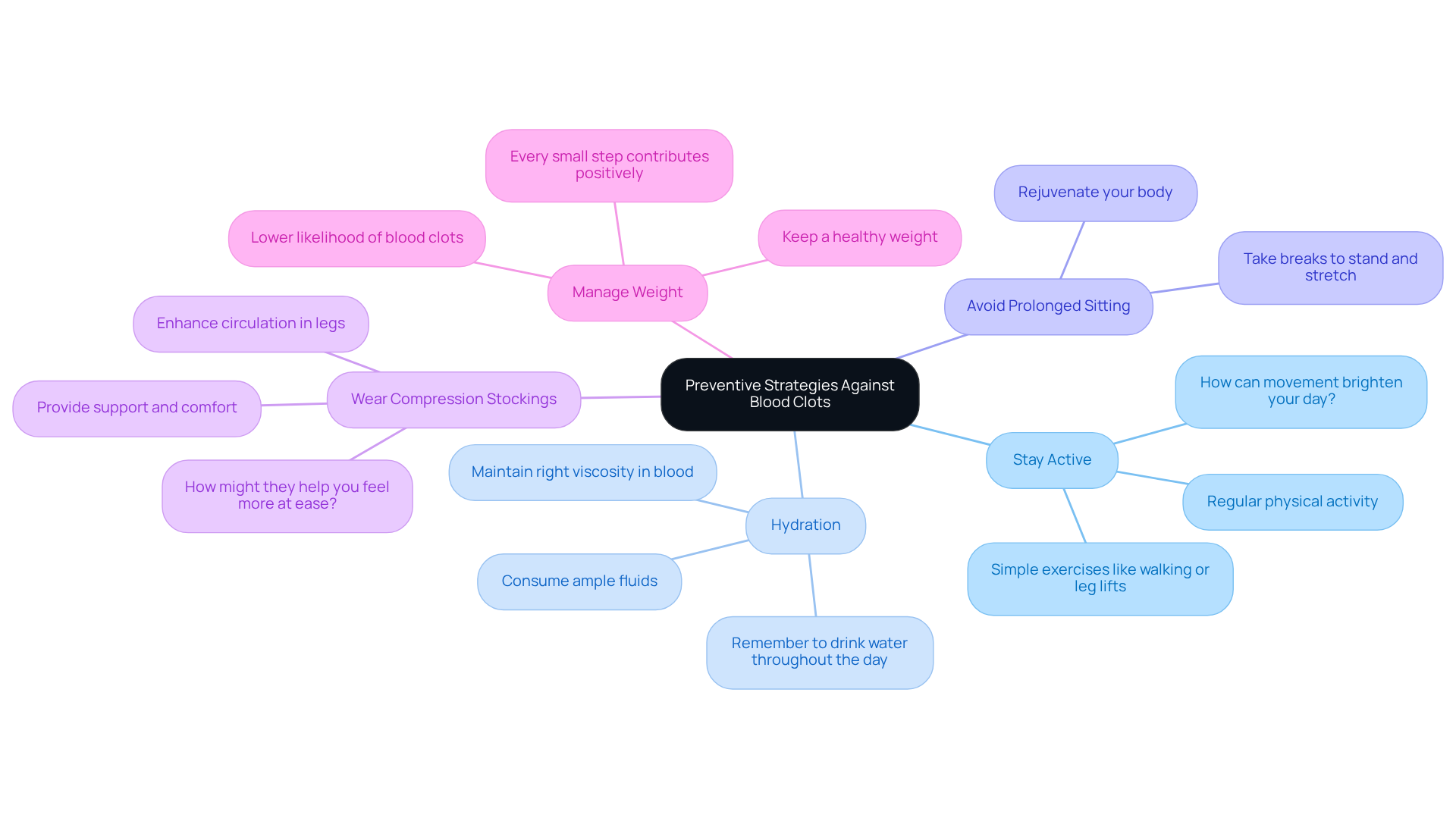
Understanding blood clots is crucial, particularly for seniors who may be at a higher risk due to factors like decreased mobility, chronic health conditions, and natural changes in bodily fluids. This article has provided a comprehensive overview of blood clots, highlighting the importance of recognizing symptoms, understanding risk factors, and exploring various treatment options. By staying informed, older adults can take proactive steps to safeguard their health and well-being.
Key insights discussed include:
Preventive strategies, such as:
are essential in reducing the risk of blood clots and ensuring timely treatment when necessary. Collaborating with healthcare providers, such as those at Amavita Heart and Vascular Health, plays a vital role in navigating this complex health concern.
Ultimately, the message is clear: awareness and proactive measures are key in the fight against blood clots. Seniors are encouraged to engage in healthy practices, monitor their health closely, and seek medical advice when needed. By prioritizing cardiovascular health and utilizing available resources, individuals can significantly enhance their quality of life and reduce the risks associated with blood clots.
What are blood clots and why are they a concern for older adults?
Blood clots are gel-like masses that can form in veins or arteries when fluid thickens and aggregates. They pose a serious health risk, especially for older adults, as they can obstruct circulation and lead to complications such as deep vein thrombosis (DVT) and pulmonary embolism (PE).
What factors increase the risk of blood clots in older adults?
The risk of blood clots in older adults increases due to decreased mobility, long-term health conditions, and natural changes in bodily fluid composition as they age.
What are some common causes of blood clot formation?
Common causes include immobility (such as during long flights or hospital stays), chronic conditions like heart failure, cancer, and diabetes, certain medications (including hormone therapies), and age-related changes in blood vessel elasticity and clotting factors.
How can older adults proactively manage their risk of blood clots?
Older adults can manage their risk by recognizing their vulnerability, monitoring their health closely, and considering specialized cardiovascular care if they have chronic conditions or are at high risk.
What role does specialized cardiovascular care play in treating blood clots?
Specialized cardiovascular care provides advanced imaging and thorough assessments tailored to the unique needs of individuals at high risk for blood clots, ensuring that their health management is comprehensive and effective.
Who is Dr. Martinez-Clark and what is his approach to blood clot treatment?
Dr. Martinez-Clark is a healthcare professional with Harvard training and extensive cardiovascular experience. He integrates sophisticated tests into comprehensive care plans to enhance health management for patients at Amavita, providing reassurance and support throughout the process.